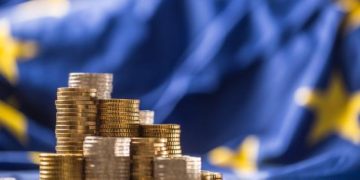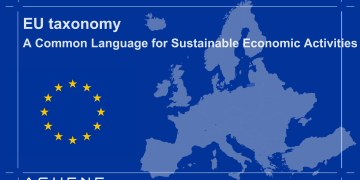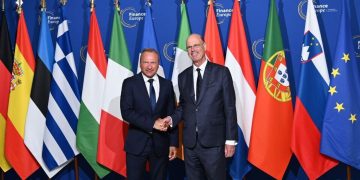Introduction
In 2025, the European Central Bank (ECB) is executing a carefully calibrated dovish pivot, cutting rates incrementally amid soft economic growth and sticky—but moderating—inflation. These rate cuts mark a significant shift: after a period of aggressive tightening in 2022–2023 to tame runaway inflation, the ECB is now easing to shield the eurozone economy from further deterioration.
But the path ahead is far from straightforward. The ECB must strike a delicate balance: ease too little, and risk tipping the economy into stagnation; cut too aggressively, and risk reigniting inflation or undermining its credibility.
This article explores the rationale behind the ECB’s rate cuts, dissects their transmission into the eurozone economy, examines the risks inherent in sustained monetary easing, and outlines potential future scenarios. We also consider strategic implications for governments, businesses, and investors.
1. Why the ECB Is Easing: The Macroeconomic Rationale
1.1 Sluggish economic growth
One of the primary drivers behind the ECB’s rate cuts is the underwhelming performance of the eurozone economy. According to ECB projections, economic growth remains tepid: earlier in 2025, growth forecasts were cut, though later forecasts saw a slight upward revision. European Central Bank+2Economy and Finance+2
In particular:
- The spring 2025 economic forecast from the European Commission pointed to moderate growth underpinned by weak global demand and uncertainty. Economy and Finance
- The autumn 2025 forecast maintained that GDP would grow only modestly, with subdued momentum in investment and exports. Economy and Finance
- The ECB’s own economic bulletin (Issue 6, 2025) projected growth of 1.2% in 2025, up from a lower earlier projection, but still weak by historical standards. European Central Bank
This weak growth dynamic is corroborated by several structural challenges: low productivity, high energy costs, and fragmented fiscal policies across Eurozone member states.
1.2 Taming disinflation
While inflation has come down significantly from its highs, the ECB is cautious about overshooting. According to the ECB’s March 2025 staff projections, headline inflation is expected to average 2.3% in 2025, then decline to 1.9% in 2026. European Central Bank
Other staff projections show a slightly different path: the Eurosystem staff forecast projects headline inflation to average 2.0% in 2025, dip to 1.6% in 2026, then rise back to 2.0% in 2027, partly due to temporary policy-driven energy price effects. European Central Bank
Core inflation (excluding energy and food) is also expected to moderate. The ECB’s projections see underlying inflation (HICPX) falling steadily over the medium term. European Central Bank+1
Put simply: inflation is cooling, but the process is gradual and the ECB wants to ensure the disinflation path doesn’t undermine economic activity.
1.3 Labor costs, wage dynamics, and profit buffers
One of the nuanced risks for the ECB is that while wage growth remains elevated in some sectors, companies are absorbing a portion of the cost increases through profit margins, which helps relieve price pressures. European Central Bank
ECB data show that growth in compensation per employee has started to slow. According to the Economic Bulletin (Issue 6, 2025), wage growth dropped to 3.9% (year-over-year) in Q2 2025. European Central Bank
This moderation in labor cost growth gives the ECB room to ease—because if wages continue to decelerate, there is less risk that rate cuts will re-accelerate inflation via a wage-price spiral.
1.4 Transmission delays and lagged effects
Another factor in the ECB’s decision to cut is the delayed transmission of previous rate hikes. The ECB itself acknowledges that “past interest rate hikes still transmitting to the stock of credit,” which means borrowing costs remain high for many companies and households. euronews
This lag in the transmission mechanism justifies gradual rate cuts: the full impact of previous tightening is still working through, so over-easing now could create imbalances later.
2. The Mechanics of ECB’s Rate Cuts in 2025
2.1 The scale and timing of cuts
By March 2025, the ECB had cut its deposit rate to 2.50%, its main refinancing rate to 2.65%, and its marginal lending rate to 2.90%. euronews
Subsequent actions further reduced rates:
- In mid-2025, the ECB explicitly adopted a “meeting-by-meeting” approach, avoiding precommitment to a fixed rate path. European Central Bank
- The ECB’s Economic Bulletin (Issue 7, 2025) notes that although inflation dipped to 2.2% in September, energy price dynamics persisted, underlining uncertainty in input costs. European Central Bank
- In public remarks, ECB President Christine Lagarde has stressed that while the disinflation process is progressing, the economy’s headwinds call for gradual easing. 衛報
Taken together, these moves reflect a cautious but persistent easing cycle, aimed at balancing inflation control with growth support.
2.2 Forward guidance and policy communication
Communication has been essential to the ECB’s strategy. Rather than signaling a fixed rate trajectory, the bank is clear that decisions are data-dependent. European Central Bank
This meeting-by-meeting strategy helps:
- Maintain flexibility in reaction to economic surprises.
- Anchor market expectations around limited but steady cuts.
- Avoid creating an expectation of loose policy indefinitely, which could undermine credibility.
2.3 Transmission into the real economy
The rate cuts are intended to lower borrowing costs and stimulate demand. According to the ECB, the current easing “makes new borrowing less expensive for firms and households,” and some loan growth is picking up. euronews
Key channels include:
- Household credit: Lower interest rates reduce mortgage and consumer loan costs, potentially supporting consumption.
- Corporate borrowing: Firms can refinance debt more cheaply and invest in growth or upgrade operations.
- Bank lending: With cheaper reserve funding, banks may become more willing to extend credit—though transmission varies across eurozone states.
- Asset markets: Lower rates may boost asset valuations (real estate, equities), improving wealth effects.
However, the ECB acknowledges that transmission is uneven. Credit conditions are still tight in many countries due to caution from lenders, and the full stimulative effect of cuts is not yet fully realized.
3. Risks and Trade-offs of the Easing Cycle
3.1 Risk of inflation rebound
While inflation is moderating, it is not guaranteed to stay below the ECB’s target:
- Base effects in energy pricing could reverse, especially if geopolitical or climate-policy-driven costs rise. European Central Bank
- The planned ETS2 (Emissions Trading System) reform in the EU could create upward price pressure on emissions-intensive sectors, influencing energy inflation later. European Central Bank+1
- Wage pressures could re-emerge if unemployment eases or labor markets tighten again.
If inflation begins to re-accelerate, the ECB may face a difficult choice: re-tighten policy (which could stifle growth) or risk credibility loss.
3.2 Financial imbalances and asset bubbles
Extended low rates may encourage risk-taking:
- Real estate: Cheaper mortgages might fuel housing booms in certain regions.
- Capital markets: Investors searching for yield may push into riskier assets, raising systemic risk.
- Corporate debt: Easy refinancing could lead to over-leverage, especially among firms with weak cash flow.
These risks are especially acute in a region like the eurozone, where financial fragmentation and cross-border banking exposures complicate oversight.

3.3 Divergent national impacts
The eurozone is not homogeneous. Rate cuts have uneven effects:
- Countries with more flexible credit markets benefit faster.
- Nations with structural challenges—such as low productivity or weak institutions—may not transmit loosening effectively.
- Fiscal conditions differ, meaning some governments may be less able to complement ECB easing with fiscal stimulus.
Academic research underscores this vulnerability: studies show that under stressed macro-financial conditions, growth risks vary significantly across large euro-area countries. arXiv
3.4 Credibility risk
The ECB’s credibility is at risk if rate cuts are perceived as panic-driven or if inflation returns. A meeting-by-meeting strategy helps preserve some flexibility, but it also leaves markets in a state of constant uncertainty.
Sustained dovishness might also erode long-term inflation expectations. If expectations de-anchor, the ECB could lose the anchor that has stabilized inflation in recent years.
4. Potential Scenarios for the Easing Cycle
Given the uncertainties, several trajectories for ECB policy are plausible:
Scenario A: Gradual easing continues, meeting-by-meeting
- The ECB continues to cut rates moderately (e.g., further 25 bps), but only if data justify it.
- Inflation remains stable or slightly dips below 2%, but rebounds slowly later due to energy or structural reforms.
- Growth picks up modestly, driven by domestic demand.
- Credit conditions gradually improve, though fragmentation persists.
This is perhaps the base case, assuming no major shocks.
Scenario B: Easing pauses or reverses
- Inflation surprises on the upside (e.g., due to energy costs, wages).
- The ECB signals a pause or even reverses cuts, re-tightening if needed.
- Growth falters again due to weaker demand or global shocks.
- Market volatility increases as investors reassess rate trajectory.
This would present a major policy risk, especially for growth and investor confidence.
Scenario C: More aggressive easing
- Growth disappoints significantly, perhaps due to geopolitical or trade shocks.
- Inflation falls below target, raising risks of deflationary pressures.
- The ECB cuts more aggressively, potentially pushing deposit/equivalent rates below 2%.
- Risks rise of asset bubbles or debt overhang, but the priority becomes growth.
This scenario is riskier but could be considered if the eurozone tumbles into deeper stagnation.
5. Strategic Implications for Key Actors
5.1 For the ECB and policymakers
- Continue data-dependent communication: meeting-by-meeting guidance seems appropriate, preserving flexibility.
- Monitor financial stability risks: keep a close eye on property markets, credit growth, and leverage.
- Coordinate with fiscal authorities: supportive fiscal policy in member states could complement monetary easing.
- Prepare contingency frameworks: scenario planning for inflation rebound or credit excesses.
5.2 For eurozone governments
- Use the window of lower rates to invest in growth-enhancing reforms (innovation, green transition, infrastructure).
- Avoid over-relying on monetary easing: structural reforms are needed to lift long-term potential.
- Harmonize fiscal policies: better fiscal integration could boost transmission and reduce fragmentation.
- Leverage ECB support: strategically issue debt, especially in sustainable/green instruments, while rates remain favorable.
5.3 For businesses and households
- Businesses: consider refinancing at lower rates, but avoid over-leveraging.
- Invest in productivity: cheaper capital provides a chance to modernize operations.
- Households: low mortgage rates present opportunities, but caution is warranted if real estate markets heat up.
- For both: hedge interest rate risk if further cuts or rebounds are plausible.
5.4 For investors
- Eurozone bonds: duration plays a key role. With more cuts, longer-duration bonds may benefit, though credit spreads will need to be monitored.
- Equities: sectors leveraged to economic recovery (consumer, industrial) may benefit, but financials could lag if net interest margins compress.
- Real assets (real estate): selective exposure could work, but risk management is essential.
- Macro plays: hedging strategies around rate path uncertainty, FX risk, and euro strength/fluctuation may be prudent.
6. Broader Implications for the Euro and Global Markets
6.1 Impact on the euro
Monetary easing typically weakens a currency, but the relationship is complex:
- Lower rates might reduce rate differentials with other major economies, putting depreciation pressure on the euro.
- However, if easing supports growth, foreign investors may still prefer euro assets, providing offsetting demand.
- If inflation does not overshoot, the ECB’s credibility remains intact, helping anchor long-term euro valuation.
6.2 Spillovers to global capital flows
- Cheaper European capital could flow into emerging markets, particularly in sectors benefiting from low financing costs.
- European investors might rebalance portfolios toward global risk assets, especially if fixed-income yields compress.
- If the euro weakens, cross-border investment dynamics may shift, especially for multinational corporations.
6.3 Monetary policy coordination
ECB easing in 2025 may coincide with different central bank cycles globally. Coordination or divergence could matter:
- If the Fed or other major central banks stay more hawkish, capital could flow out of Europe, pressuring the euro.
- Alternatively, if other major banks also ease, the eurozone could benefit from competitive positioning.
- The digital euro project (or other monetary innovations) could amplify the euro’s role if paired with accommodative policy.
Conclusion
The ECB’s monetary easing in 2025 reflects a nuanced strategy: responding to weak demand, disinflation, and transmission lags, while being careful not to lose control of inflation or financial stability. Its meeting-by-meeting approach underscores how uncertain the outlook remains.
Rate cuts have begun to make borrowing cheaper, but transmission is uneven, and risks—from inflation resurgence to asset bubbles—are real. The ECB must walk a tightrope between ensuring support for growth and safeguarding its long-term credibility.
For eurozone governments, the current window of low rates is a rare opportunity to invest in growth and reform. For businesses and households, it is a chance to refinance and modernize—if undertaken judiciously. For investors, the era ahead demands nimble positioning, with close attention to duration, credit risk, and macro hedges.
Ultimately, the success of this easing cycle will depend not just on ECB policy, but on how well Europe’s economies leverage this moment—not just to survive, but to transform. The euro’s strength will not only stem from lower rates; it will require structural resilience, fiscal cohesion, and forward-looking reforms.





























